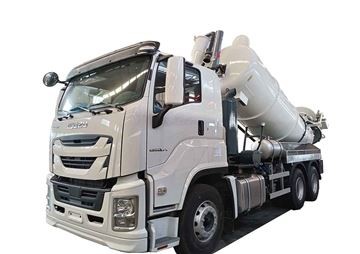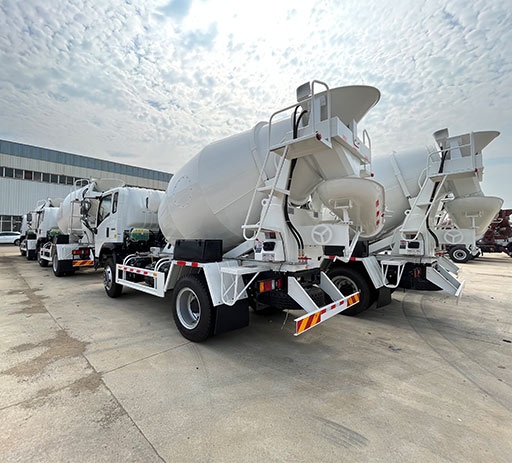Everything You Need to Know About Head Trucks: The Ultimate Guide

Head trucks, also known as prime movers or tractor units, play a vital role in the transportation and logistics industry. These powerful vehicles are designed to tow trailers or semi-trailers, enabling the efficient movement of goods across various terrains. In this comprehensive guide, we will explore the various aspects of head trucks, including their types, features, maintenance, safety, and efficiency tips.
What is a Head Truck?
A head truck is a truck that is specifically built to tow a trailer. They are an essential component of heavy-duty transportation and are used extensively in freight logistics. These vehicles are characterized by a distinct tractor-like body with a powerful engine and a hitch at the rear for connecting to a trailer.
Types of Head Trucks
1. Conventional Head Trucks
Conventional head trucks are recognizable by their long hood and front-mounted engine. They provide advantages in terms of visibility and aerodynamics, making them popular among long-haul truckers.
2. Cab Over Engine (COE) Trucks
COE trucks have a more compact design where the cab sits above the engine. This design maximizes cargo space and improves maneuverability, especially in urban settings.
3. Heavy-Duty Trucks
Heavy-duty head trucks are designed to handle larger trailers and heavier loads. They are equipped with powerful engines and durable components to endure rigorous use.
4. Medium-Duty Trucks
Medium-duty head trucks typically carry loads between 10,001 to 26,000 pounds. They are commonly used for regional deliveries and local hauling.
Key Features of Head Trucks
Understanding the defining features of head trucks can help business owners and fleet managers choose the right vehicle for their needs.
1. Engine and Performance
The engine’s power is a fundamental aspect that determines a head truck’s performance. Most head trucks are equipped with diesel engines, known for their fuel efficiency and torque.
2. Transmission Options

Head trucks offer various transmission options, including automatic and manual transmissions. Automatic transmissions provide ease of use, while manual transmissions offer better control in specific situations.
3. Cargo Capacity
The cargo capacity varies among different models. Selecting a truck with the right capacity is crucial to ensure operational efficiency and compliance with load regulations.
4. Safety Features
Modern head trucks come equipped with advanced safety features such as anti-lock braking systems (ABS), electronic stability control (ESC), and advanced driver-assistance systems (ADAS) to enhance safety on the road.
5. Fuel Efficiency
Fuel efficiency is a critical factor for operational costs. Head trucks with aerodynamic designs and fuel-efficient engines can help reduce overall fuel consumption.
Choosing the Right Head Truck for Your Business

Selecting the appropriate head truck for your fleet requires careful consideration of various factors:
1. Assess Your Needs
Determine what types of loads you will be hauling and the distances involved. This assessment will guide you in selecting the ideal truck type and specifications.
2. Budget Considerations
Determine your budget not just for purchasing the vehicle but also for maintenance, fuel costs, and insurance. A thorough cost-benefit analysis can help you make an informed decision.
3. Brand and Model Reputation
Research reputable brands and models. Customer reviews and feedback from other operators can help indicate reliability and performance.
Maintenance Tips for Head Trucks
1. Regular Inspections
Conduct regular inspections of the brakes, tires, engine, lights, and other critical components. Scheduled maintenance can prevent significant issues and enhance safety.
2. Oil Changes
Regular oil changes are essential for engine longevity. Always follow the manufacturer’s guidelines regarding oil type and replacement intervals.
3. Tire Maintenance
Regularly check tire pressure and tread depth. Properly inflated tires improve fuel efficiency and handling.
4. Brake Maintenance
Maintain brakes to ensure optimal stopping power. Check brake pads, fluid levels, and the overall brake system condition.
Safety Considerations for Head Trucks
Safety is paramount when operating head trucks. Here are effective strategies for enhancing safety:
1. Driver Training
Ensure all drivers receive comprehensive training, including safety protocols, defensive driving techniques, and emergency procedures.
2. Load Distribution
Proper load distribution is crucial for stability. Ensure the load is balanced and securely fastened to prevent shifting while in transit.
3. Emergency Equipment
Equip head trucks with necessary emergency equipment, including first aid kits, fire extinguishers, and warning triangles.
4. Monitor Weather Conditions
Keep track of weather conditions and adjust driving strategies accordingly. Be cautious in poor weather, including rain, snow, or fog.
Maximizing Efficiency in Head Truck Operations
Improving operational efficiency can lead to significant cost savings. Here are tips for maximizing efficiency:
1. Route Optimization
Use GPS technology and route planning software to find the most efficient paths, minimizing fuel consumption and travel time.
2. Load Optimization
Maximize payloads while adhering to weight regulations. Efficient load planning can reduce trips and costs.
3. Regular Driver Feedback
Provide feedback to drivers on their performance. Encourage eco-friendly driving practices, such as smooth acceleration and avoiding excessive idling.
4. Technology Utilization
Leverage telematics systems to monitor vehicle performance and driver behavior. This data can help in making informed decisions for improvements.
Environmental Impact of Head Trucks
As the transportation sector evolves, concerns regarding environmental impacts have become paramount. Here are some considerations:
1. Emission Standards
Head trucks are subject to various emission standards. Operators should choose vehicles that comply with regulatory requirements to minimize their environmental footprint.
2. Fuel Alternatives
Explore alternatives such as biodiesel, natural gas, or electric head trucks, which produce fewer emissions compared to traditional diesel engines.
3. Maintenance for Fuel Efficiency
Regular maintenance not only prolongs the vehicle’s life but also improves fuel efficiency, further reducing the environmental impact.
Future Trends in Head Truck Transportation
The head truck transportation industry is evolving with several promising trends:
1. Advancements in Technology
Integration of technology such as autonomous driving features and improved telematics systems is expected to become commonplace.
2. Increased Focus on Sustainability
Operators are increasingly focusing on green initiatives, adapting practices and vehicles to reduce overall environmental impact.
3. Electrification and Hybrid Models
With advancements in battery technology, electric and hybrid head trucks are gaining popularity, offering lower operating costs and reduced emissions.
FAQ Section

1. What is the average lifespan of a head truck?
The average lifespan of a head truck can range from 10 to 15 years, depending on usage, maintenance, and model quality.
2. How often should I service my head truck?
It is recommended to service your head truck every 5,000 to 10,000 miles, but this can vary based on the manufacturer’s guidelines and usage conditions.
3. What are the best brands for head trucks?
Some well-regarded brands include Freightliner, Peterbilt, Kenworth, Volvo, and Mack, known for their reliability and performance.
4. Can I tow a heavy trailer with a medium-duty head truck?
Medium-duty head trucks can tow heavy trailers, up to certain weight limits. Always consult the manufacturer’s specifications for towing capacity.
5. What safety equipment is essential for head trucks?
Essential safety equipment includes a first aid kit, fire extinguisher, reflective triangles, and an emergency roadside kit.
6. How can I improve fuel efficiency in head truck operations?
Improving fuel efficiency can be achieved through route optimization, maintaining proper tire pressure, regular vehicle maintenance, and encouraging eco-friendly driving habits.
